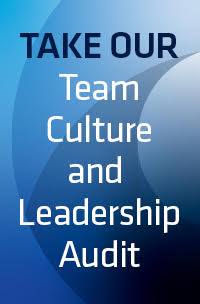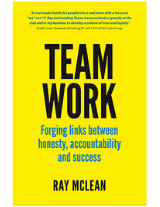Behavioural frameworks play a big role in what we do at Leading Teams. That’s because when we can align our behaviours with our core values, we can better manage expectations, relationships and overall performance.
For over two decades we’ve been building up our knowledge on behaviours and their relationship with team success.
Since Ray McLean began delivering our model in 1992, we have been building our knowledge on behaviours and their relationship with team success. According to Ray, behavioural frameworks can be defined as “an agreement we make as a team around the behaviours we will accept or won’t on our team.”
In this article we want to take you through the foundations of what we’ve learned over the past two decades. What do behavioural frameworks look like? Why should you be paying attention to them? And how can leaders mould these frameworks to advance organisational goals?
Part one: What?
You see behavioural frameworks in a lot of companies in the form of a mission statement. They are often strong declarative sentences about company values and intentions. However, these are only effective in organisations that commit to having these values drive everything they do. Behaviours in business shouldn’t be trivial or left to chance, they should be conscious decisions with a purpose. That is what a behavioural framework does, it helps ensure individual actions are aligned to accomplish a collective mission.
Part two: Why?
There is no such thing as a behaviour-less team, so if you are not paying attention to your behavioural frameworks, you are leaving a big part of business success up to chance.
Behaviours are what drive our successes, as well as our failures. If you aspire to be a team defined by creative solutions, honesty and work ethic then you need to build a clear set of expectations, values and actions that enable your team members to build this vision.
When executed correctly, a behavioural framework gives your team members a shared vision.
This is more than crafting up a mission statement and hanging it on the wall. It means sitting down with your team and agreeing upon a set of values and behaviours. If you want to be a creative team, you need to agree to give clients products or services that stretch beyond the everyday solution. When this isn’t being accomplished you need to examine why and revise your approach. If you are not actively building, adjusting or adhering to a behavioural framework then you are really just treading water.
When executed correctly, a behavioural framework gives your team members a shared vision, providing a roadmap of expectations and values to work from. With this guidance you can ultimately build a team of engaged professionals with different skillsets working towards the same goals with the the same underlying values. This is what high performance truly looks like.
Part three: How?
So how can leaders get serious about creating purposeful behavioural frameworks for their team? From beginning to end, it’s all about commitment.
First, you need to be willing to have an honest conversation about behaviours. This means addressing some pretty basic questions, including:
- What are three words you would use to describe your organisation?
- What would your team look like in the perfect world?
- Have you begun to accept counterproductive behaviours on your team? What are they?
- What behaviours do you want your team to emulate in the future?
These reflective questions will help build the foundation for creating new frameworks, eliminating toxic behaviours and implementing desired behaviours.
From there leaders need to commit to modeling these behaviours – emulating the rhetoric and the actions they want to see in their team members. But more than that, they need to commit to rewarding desired behaviours and challenging misaligned actions.
Praising the team members that embrace your behavioural framework and challenging those who do not will reinforce the behaviours as integral to the company culture. After a while, this will become natural. Employees will begin to understand what behaviours are expected and regulate each other (and themselves) as a result – setting your business on the road to high performance.
Part four: Who?
So, who do you turn to when you really want to work on your internal frameworks? We’d like to help. Leading Teams has been helping teams and organisations of all sizes define, align and implement effective behavioural frameworks for over 25 years.
Pinpointing the correct behaviours for your team is the first step towards creating a truly high performing team. To learn more about how our model can help you reach your organisational goals, give us a call today on 03 9654 3744.





